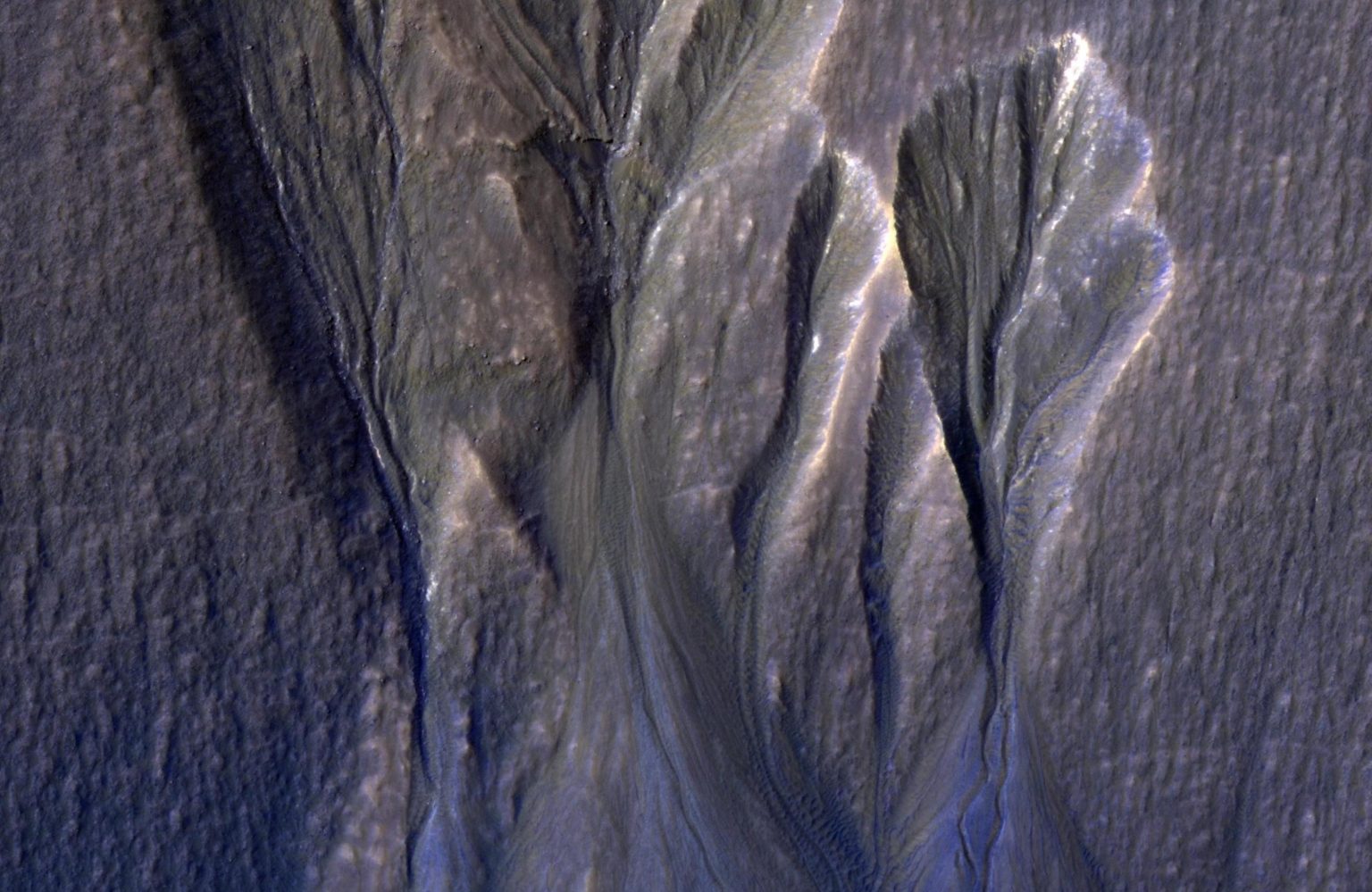A new study suggests that layers of dusty ice just beneath the surface of Mars, exposed to sunlight, may be potential habitats for microbial life. The study, published in Nature Communications Earth & Environment, utilized models based on impure ice from Greenland to determine where conditions on Mars could be favorable for photosynthesis. The researchers, led by Aditya Khuller of NASA’s Jet Propulsion Laboratory, found that certain depths in Martian ice could be shielded from radiation while receiving enough sunlight to support life.
Today, Mars is inhospitable to life due to its cold, dry environment and high levels of ultraviolet radiation. However, scientists believe conditions on the planet were more conducive to life in the past, and it is possible that some organisms could survive underground. By studying the composition of Mars’ ice, Khuller and his colleagues identified layers that could potentially support photosynthesis by filtering out harmful radiation and allowing water to thaw. These conditions are most likely to occur in warmer areas at mid-latitudes on Mars.
The researchers determined that the depth of the habitable zone in Martian ice would vary depending on the amount of dust present. If the ice contains between 0.01% and 0.1% dust, the zone could be 5 to 38 centimeters deep, while cleaner ice would have a deeper zone of 2.15 to 3.1 meters. Areas with exposed dusty ice within gullies on Mars are considered potential targets for future missions to search for signs of life. NASA, in collaboration with partners such as Blue Origin, is developing plans to bring back samples from Mars for further study.
While there is no direct evidence of microbes on Mars, the research findings provide insight into where microbial life could potentially exist on the Red Planet. By focusing on areas with exposed dusty ice at mid-latitudes, researchers hope to find signs of life in the form of microorganisms deep within the Martian ice. Future missions to Mars could target these locations identified in the study to further investigate the possibility of life on the planet. The study, “Potential for Photosynthesis on Mars Within Snow and Ice,” includes authors such as Philip Christensen and Gary Clow in addition to Khuller and Warren.


